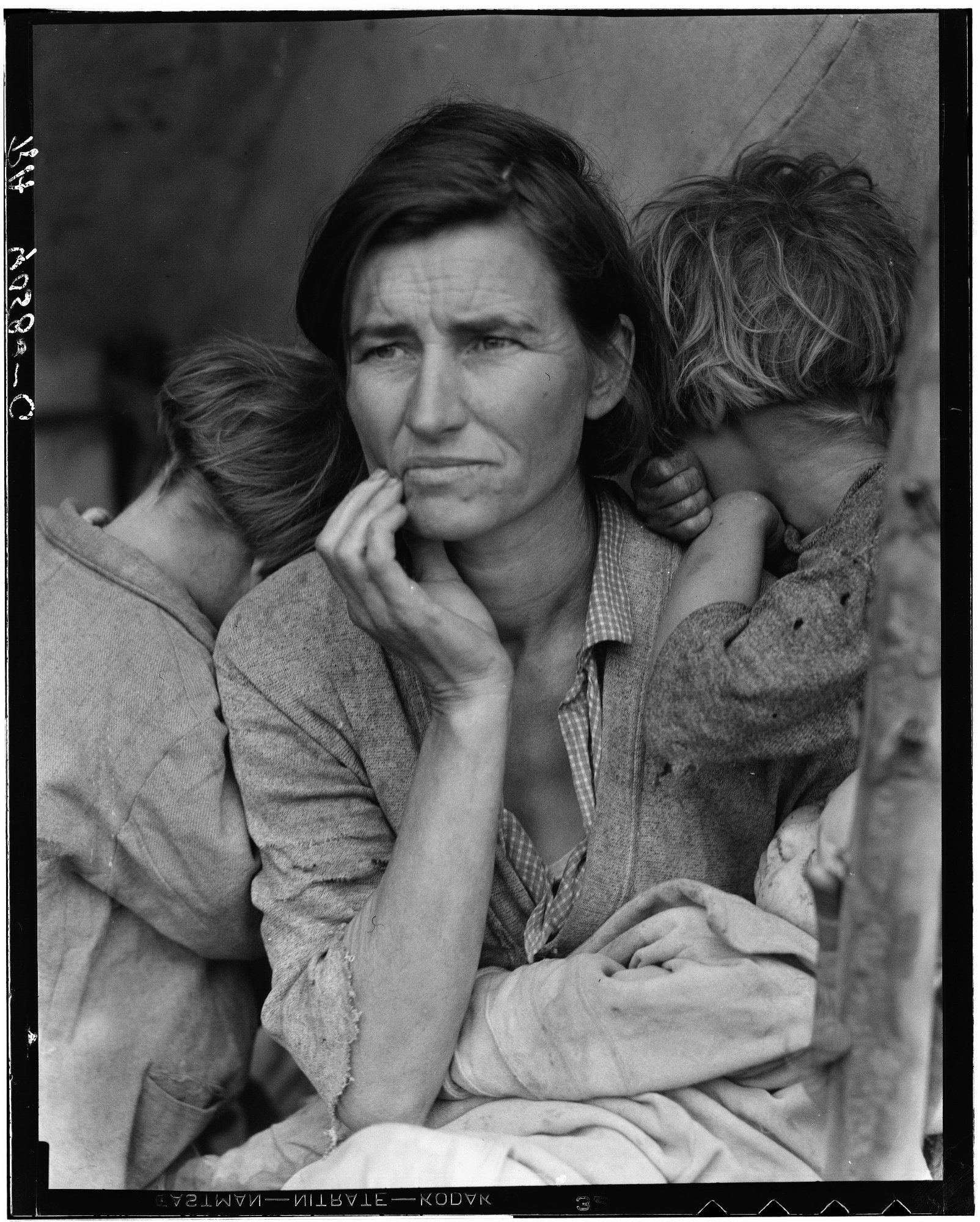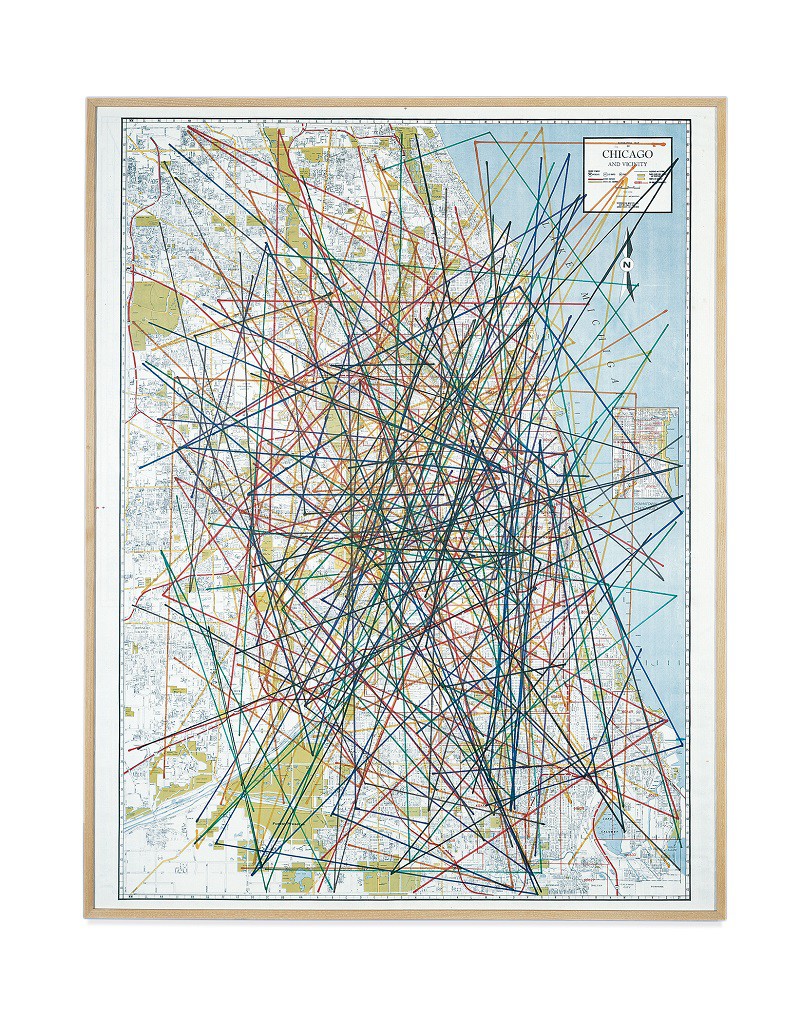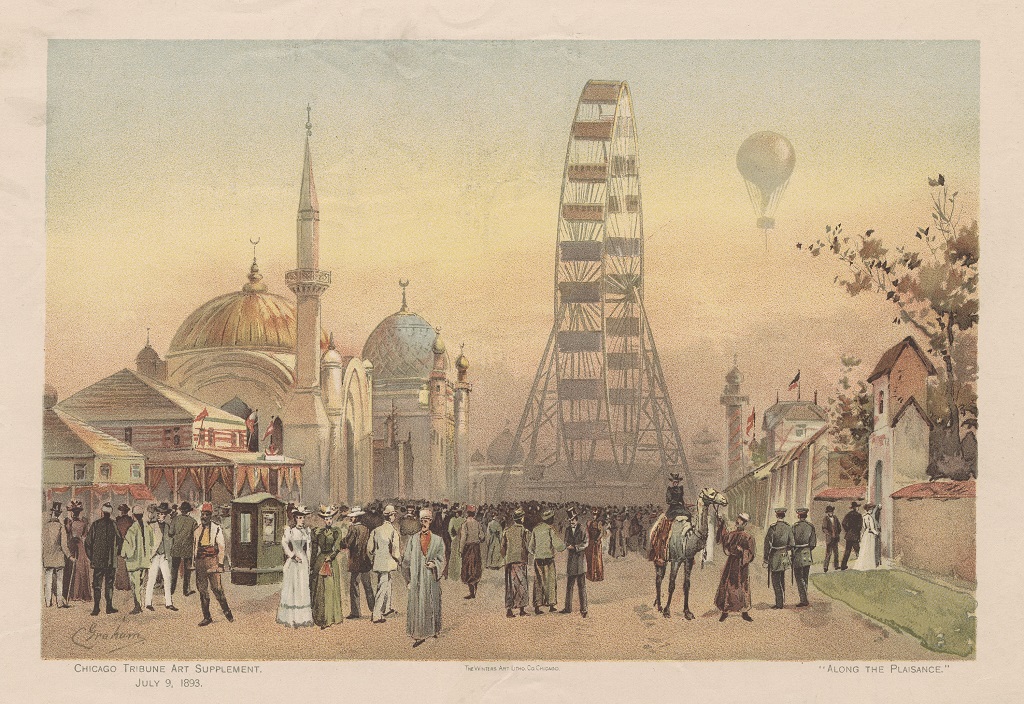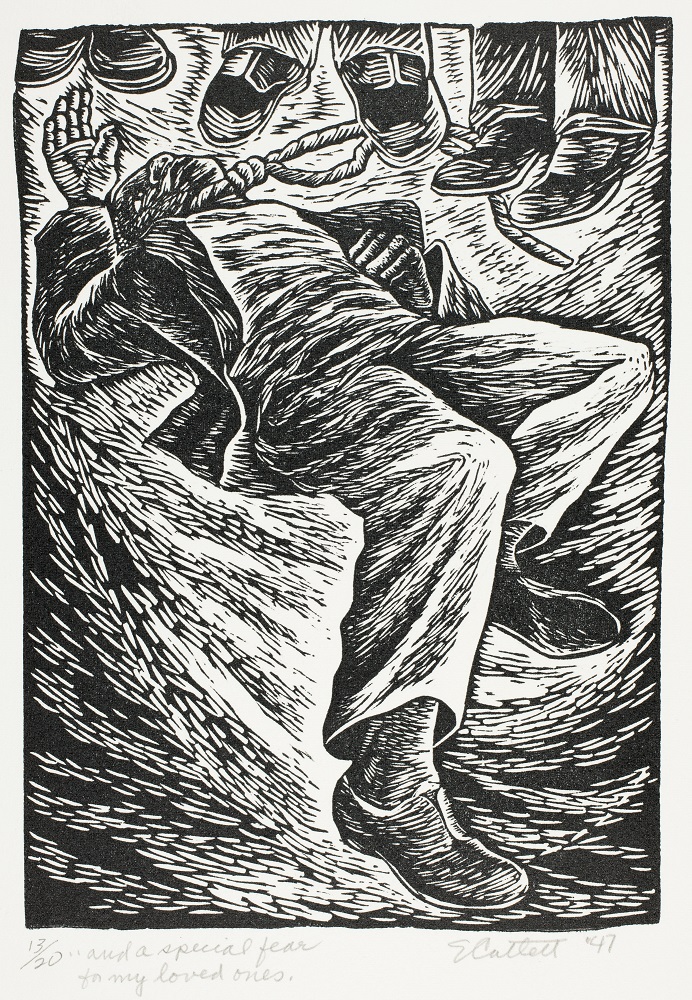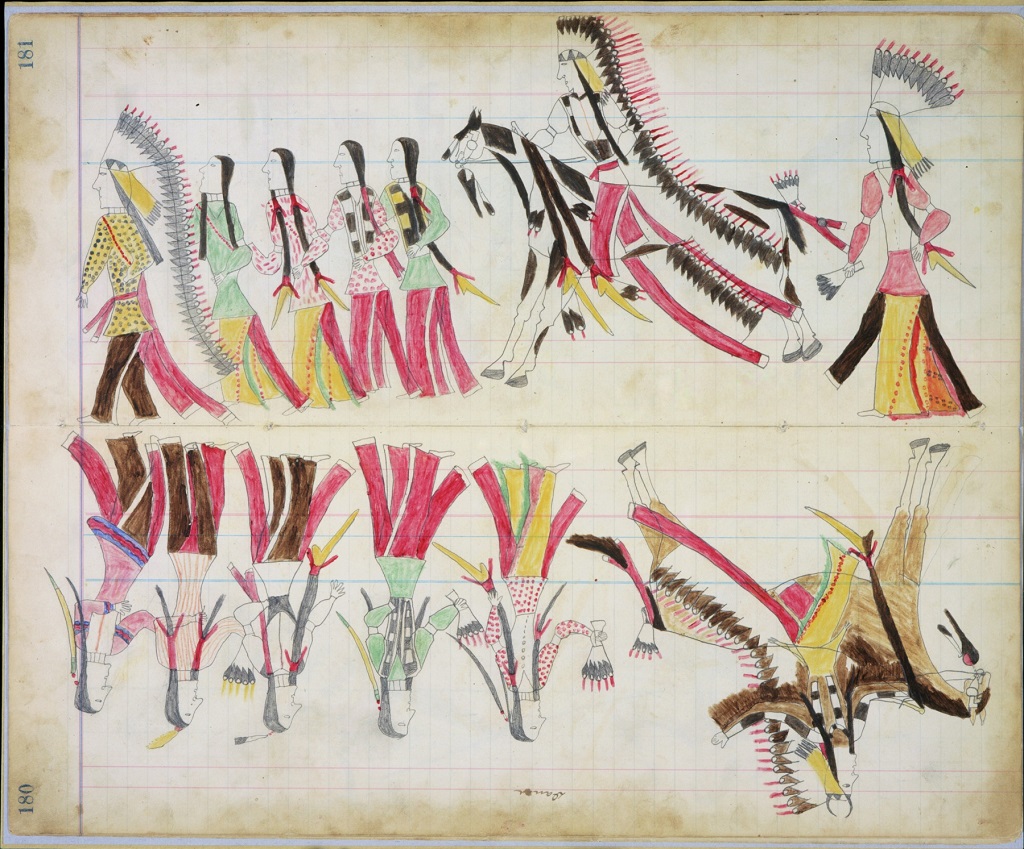Author:
Corinne Rose, Museum of Contemporary Photography
Summary:
Dorothea Lange’s 1936 image Migrant Mother is one of the most widely reproduced images in the history of photography. In this lesson, students will deepen their understanding of this iconic image. First, students will conduct a slow and careful “reading” of the image, noting details that support their observations and interpretations. Students will then consider this work in the light of a caption that Lange wrote for another photograph of the same family. They will read an informational text about Dorothea Lange and her work with the Farm Security Administration, and will listen to an interview with the woman in the photograph, Florence Thompson, to deepen their understanding of the photo’s cultural and historical context. Next, students will compare Migrant Mother with the five additional frames Lange made of the scene that day. Finally, students will consider how the work fits within the tradition of documentary photography.
Lesson Overview
Grade Levels: 5–8
Time Needed: 40–50 minutes
Background Needed
Students should have a general awareness of the causes and effects of the Dust Bowl in the Great Plains region of the United States during the 1930s. These resources can be used to provide helpful background information:
Essential Questions
- How do photographers express ideas, tell stories, and capture history through the tools and techniques of their medium?
- How can the close reading of a range of texts deepen your understanding of historic events?
- How does your awareness of the cultural and historic context of a work deepen your understanding?
Enduring Understandings
- Understanding a text’s structures and themes helps the reader to make meaning of the text.
- Key details reveal the content and tone of an image or a text.
- Reading informational texts about the cultural and historic context of a work of art deepens our understanding of the work.
Objectives
- Students will determine the central ideas and key supporting details of images and texts related to Dorothea Lange and the Dust Bowl.
- Students will assess how point of view shapes the content of an image or a text.
- Students will evaluate content that is presented in diverse media and formats.
- Students will analyze how two or more texts address a similar topic in order to build knowledge about the topic.
Key Vocabulary
- caption
- composition
- documentary photography
- point of view
Standards Connections
Common Core State Standards
Anchor Standards in Reading: http://www.corestandards.org/ELA-Literacy/CCRA/R/
- CCSS-ELA Reading Anchor Standard 2: ELA-LITERACY.CCRA.R.2
- CCSS-ELA Reading Anchor Standard 6: CCSS.ELA-LITERACY.CCRA.R.6
- CCSS-ELA Reading Anchor Standard 7: CCSS.ELA-LITERACY.CCRA.R.7
- CCSS-ELA Reading Anchor Standard 9: CCSS.ELA-LITERACY.CCRA.R.9
Materials
In the Classroom
- student writing journals or paper (for recording reflections)
- a computer with Internet access
- an interactive whiteboard or another classroom projector
Works of Art
- Dorothea Lange, Migrant Mother, and five other frames in the same series: http://www.loc.gov/rr/print/list/128_migm.html
Other Resources
- Dorothea Lange, photo caption: http://www.loc.gov/rr/print/list/128_migm.html
- Art Study: Migrant Mother, Read to Build Knowledge
- “Migrant Mother—Florence Thompson,” audio recording: http://www.livinghistoryfarm.org/farminginthe30s/movies/thompson_water_06.html
Lesson Steps
- Guide a close reading of Migrant Mother: Display the image (http://loc.gov/pictures/resource/fsa.8b29516/). Use the following questions to guide students in a close reading of the image:
- Describe what you see.
- Where does your eye go first? Where does it go next? Why?
- What can you tell about how the photographer made the picture?
- What do we learn about the people in the photograph? How? What do we learn about the place?
- What is the mood or feeling of the image? How is that communicated?
- What do we know for certain?
- What assumptions might we have made?
- Can you tell how the photographer feels about her subjects? If so—how?
- Do you feel any personal connections to this work? Explain.
- Can you think of any other artworks that remind you of Migrant Mother? Describe.
- Discuss a caption: Explain that photographer Dorothea Lange created this image and several others when she met this family in March, 1936. Share and discuss the caption that Lange wrote for another photograph of the same mother and children:
“Migrant agricultural worker’s family. Seven hungry children. Mother aged 32, the father is a native Californian. Destitute in a pea pickers camp because of the failure of the early pea crop. These people had just sold their tent in order to buy food. Most of the 2,500 people in this camp were destitute. Nipomo, California, 1936.” (http://www.loc.gov/rr/print/list/128_migm.html)
Ask students: How does your perception of this image and of this woman change when you have this additional information?
- Play an audio recording: Florence Thompson was the woman pictured in Migrant Mother. Have students listen to her account of the events depicted in the image. (http://www.livinghistoryfarm.org/farminginthe30s/movies/thompson_water_06.html)
- Share an informational text: Have students read the Art Study: Migrant Mother, Read to Build Knowledge.
- Discuss the three sources of information: Ask these questions:
- What did you notice about each source of information?
- What new information did you learn from each source?
- How is the information you can learn from a photograph different from what you can learn from an audio recording or an informational text?
- How was Dorothea Lange’s point of view different from Florence Thompson’s point of view? How does that affect their descriptions of the day that the images were made?
- How do these three sources of information combine to deepen your understanding of the work?
- Consider Lange’s additional frames: Tell students that Dorothea Lange took six frames of the scene that day. Have them look carefully at each of the frames and respond to these questions:
- Describe what each separate image shows. How are they alike? How are they different?
- Why do you think that Dorothea Lange and her boss Roy Stryker chose the tightly-framed image of the woman and not one of the other five images to reproduce and distribute?
- For what reasons do you think this image became so famous or iconic over time?
- Connect Migrant Mother to the larger context of the FSA and documentary photography: Explain that the images made by Dorothea Lange and other Farm Security Administration photographers are considered to be documentary photographs—they were intended to record history and tell the story of a time, place, or a group of people. While many of the FSA photographers pursued their individual interests in what they photographed, they were ultimately working on assignment for the US government. Their images were used in part to promote government programs and were eventually archived in the Library of Congress. The FSA photographers did not have control over how the images they created were reproduced, distributed, or archived. Have students discuss the following questions:
- What can photography do well in creating a record or document? What are its limitations?
- In what ways can documentary photographs be “truthful?” How could a documentary photograph be misleading?
- What are some of the rights and responsibilities of those who tell the stories of others through photographs or words?
- Why would the FSA hire photographers to document the people and the places affected by the Dust Bowl?
- Now that you have learned much more about this work, how have your perceptions of Migrant Mother (the image, as well as the woman depicted) changed?
Extension Activities
- Plan a Documentary Project: Farm Security Administration photographers of the 1930s and early 1940s used photography to record and respond to great issues of their time such as joblessness, homelessness, and natural and man-made disasters. Divide students into groups and have each group discuss the following questions:
- What are some of the major political and humanitarian issues of our time?
- What are some issues of concern at your school or in your neighborhood?
- If you were to select one of these issues to document through photography, what would you photograph? Why?
- What places, people, or details would you show to tell the story?
- How would you make those pictures?
Have members of each group share their ideas with the rest of the class.
- Write Captions for Photographs: Gathering information and writing captions to accompany their images was an important part of the work of the FSA photographers. Have students use cellphone cameras to take photographs that reveal something about their school or neighborhood. Then have them write captions that provide important background information about their photographs. Students can display their photographs and captions in a PowerPoint presentation or on a classroom website.
Additional Resources
“Farming in the 1930s,” Wessels Living History Farm, accessed August 12, 2014, http://www.livinghistoryfarm.org/farminginthe30s/farminginthe1930s.html

